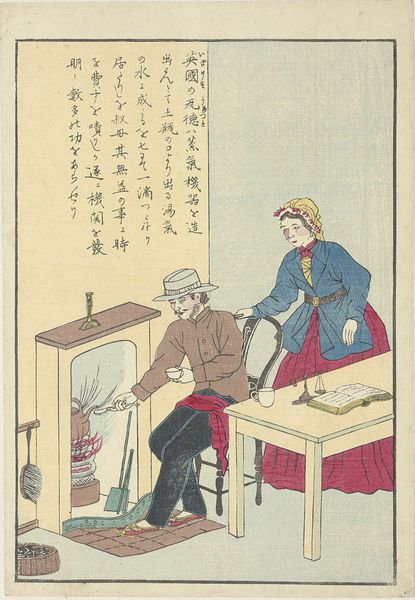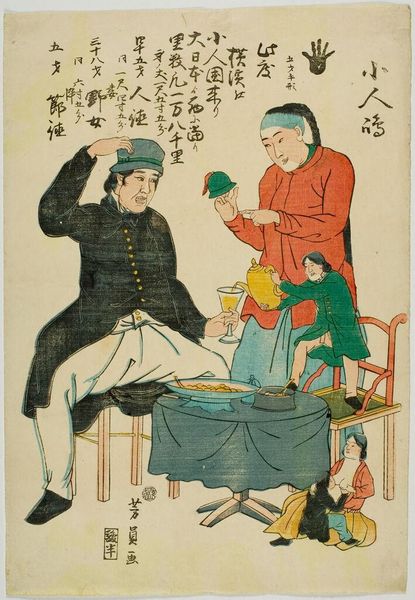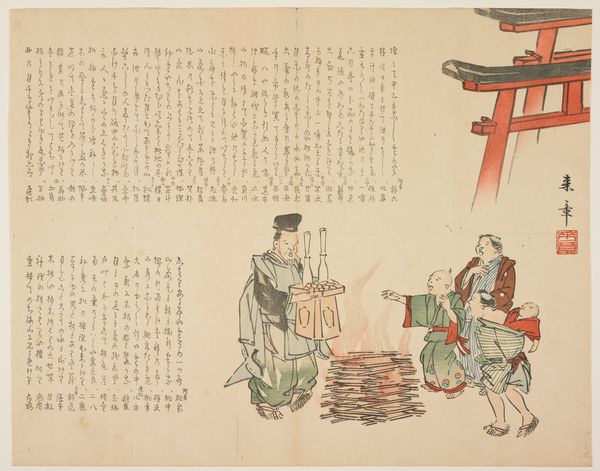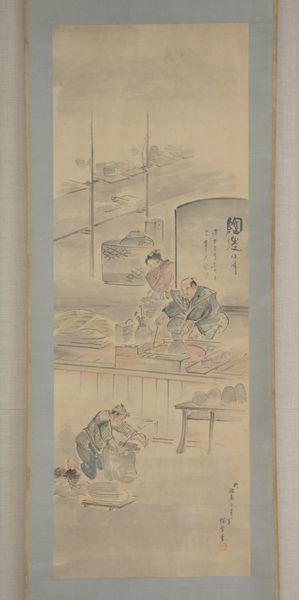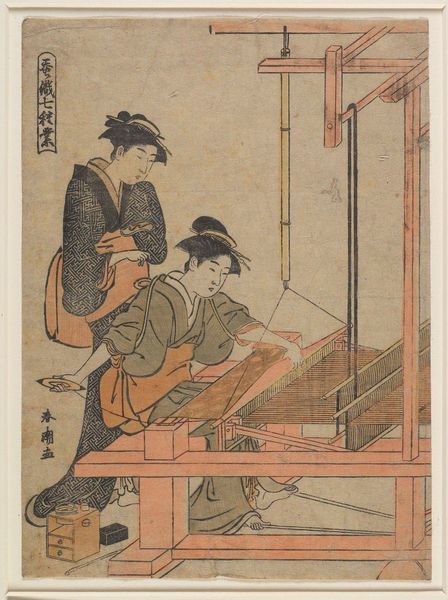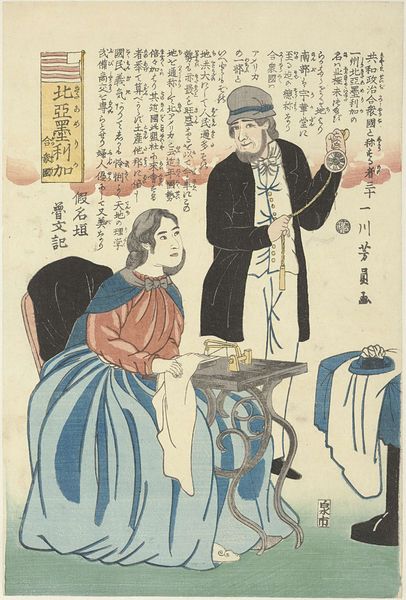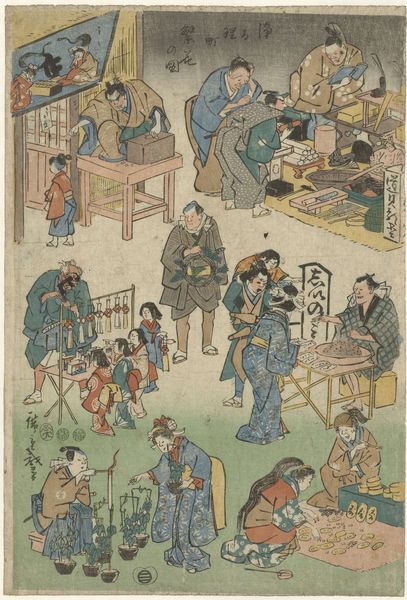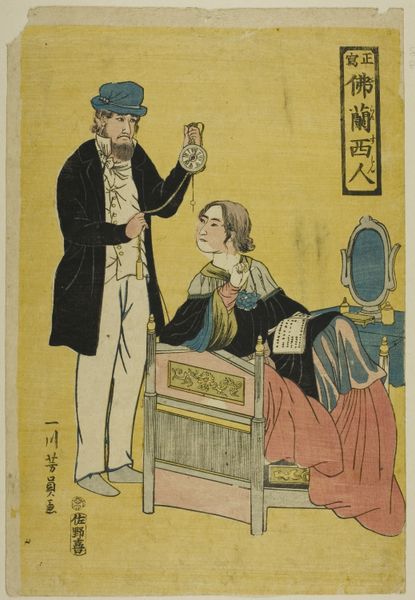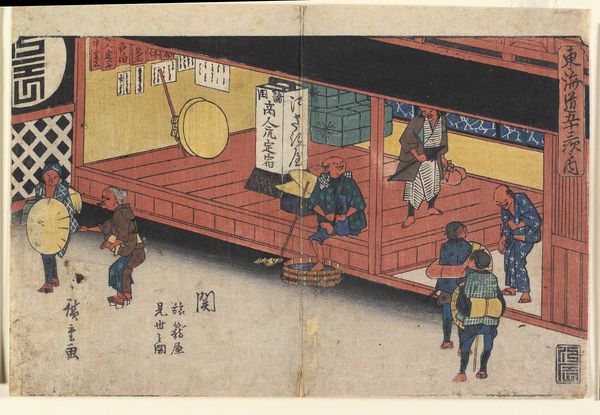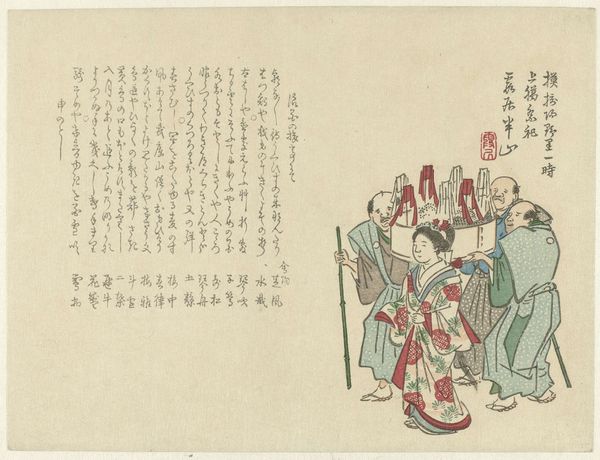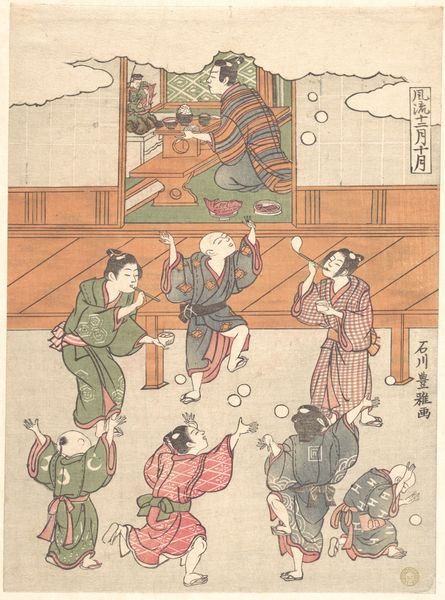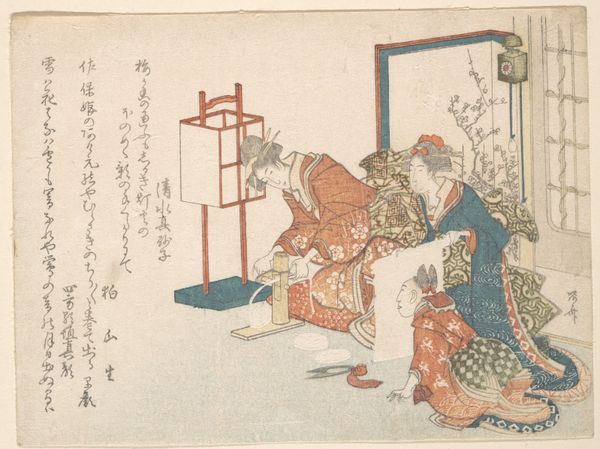
Dimensions: 13 1/2 x 9 3/16 in. (34.3 x 23.3 cm) (image)
Copyright: Public Domain
Curator: I find this 1873 colored pencil print, titled "Josiah Wedgewood," to be a really fascinating example of Orientalism. The work currently resides in the collection of the Minneapolis Institute of Art. Editor: It immediately strikes me as a kind of staged observation, like peering into a workshop from a viewpoint that’s simultaneously inside and outside. The attention to detail on the plates and other ceramics makes me curious about the means of production at work. Curator: The print, which incorporates ink too, I understand, offers a lens into late 19th-century Japan's view of Western industrial endeavors through the figure of Josiah Wedgewood. It hints at themes of international trade and cultural exchange during that era. It reflects the negotiation between Western influence and Japanese artistic interpretation. The print raises important questions about power dynamics, labor conditions, and cultural appropriation. Editor: I agree completely about the questions it raises. Wedgewood was a pioneer, really. Considering the social context – his focus on efficiency, factory production – it's hard not to see this print as commenting on industrialization. The visible labor, the stacking and serving—it makes the social relations embedded in this production strikingly visible. Curator: The text inscribed above, though in Japanese, emphasizes this tension between what is native and what is foreign. The visual style is so deliberately positioned as both “Japanese” and evocative of a very Western subject, but how should we begin to disentangle these cultural negotiations and re-representations of the West in Japanese art, and what power do these have? The representation does have the unfortunate aftertaste of classism as it tries to exoticize labor conditions, don't you think? Editor: It certainly highlights those class differences, it cannot go unaddressed. By looking at the materials and labor on display here, the artist has a unique way of documenting the conditions of a globally expanding capitalist project, that may offer critical counterpoints. The artist clearly makes the viewer reckon with these production systems. Curator: Absolutely, understanding the artwork's social and historical context allows us to analyze its messages. Editor: Seeing the mechanics of labor visualized makes me reconsider how items we consume gain value through human intervention.
Comments
No comments
Be the first to comment and join the conversation on the ultimate creative platform.
